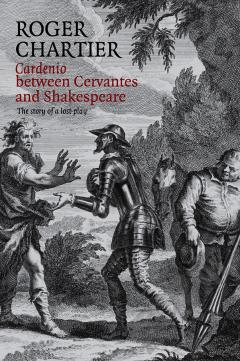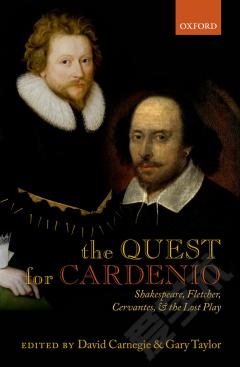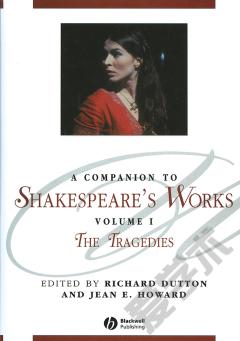Cardenio between Cervantes and Shakespeare —— The Story of a Lost Play
----- 塞万提斯和莎士比亚之间的卡迪尼奥:发挥失常的故事
Introduction READING A TEXT THAT DOES NOT EXIST Chapter I CARDENIO AT COURT LONDON, 1613 Spain in England Don Quixote in translation Why Cardenio? Dorotea s story Happy ending Chapter II CARDENIO AND DON QUIXOTE SPAIN, 1605-1608 Don Quixote as he is depicted in his book Double marriages Don Quixote gracioso de comedia The madman, the poet and the prince Seeming and being: an exchange of sons Chapter III A FRENCH CARDENIO PARIS, 1628 AND 1638 Don Quixote in France Luscinde s marriage The mad fits of Cardenio The mad fits of Don Quixote Guerin de Bouscal: the queen of Miconmicon The bearded duena and the wooden horse Novel, novellas and theatre Chapter IV CARDENIO IN THE REVOLUTION LONDON, 1653 Writing in collaboration. Fletcher and Shakespeare The famous history of the life of King Henry VIII The two noble cousins A play never published Don Quixote in the revolution From Shelton to Gayton. Cardenio in verse Chapter V CARDENIO REDISCOVERED LONDON, 1727 The miracle of the Theatre Royal Publishing and politics Theobald, editor and author Preliminaries, dedications and privilege Theatrical enthusiasm. An authentically Shakespearean play Editorial prudence. A play excluded from the canon Chapter VI REPRESENTATIONS OF CARDENIO ENGLAND, 1660-1727 Images and words. The illustrated Spanish text The engravings of translations Don Quixote without Cardenio. The booklets sold by peddlers Cardenio abridged Don Quixote in serial form Cardenio in the theatre. First D Urfey, then Theobald Chapter VII CARDENIO ON STAGE LONDON, 1727 The double betrayal The interrupted marriage Ruses and a denouement 1727, 1660, 1613 Double Falshood, a mystification or an adaptation? Epilogue. CARDENIO FEVER The manuscript recovered How should a lost play be staged? Cardenio published The discrepancy between different periods Postscript THE PERMANENCE OF WORKS AND THE PLURALITY OF TEXTS APPENDICES Notes Index of names Tables of Illustrations
{{comment.content}}








 京公网安备 11010802027623号
京公网安备 11010802027623号